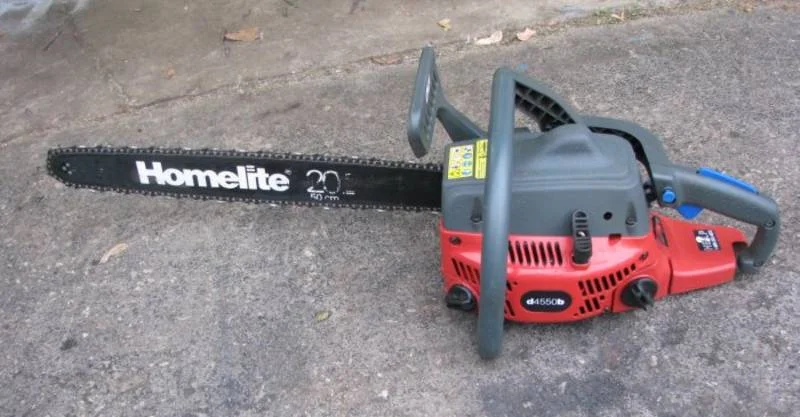Homelite serial HK2630402: Homelite is a well-known American brand in small engines and power equipment — chainsaws, blowers, trimmers, generators, and similar gear. Over the years, many users and collectors rely on serial numbers to determine the production date, model version, and authenticity of their Homelite machines.
A serial number like HK2630402 can be a clue — though decoding Homelite serials is not always straightforward, especially for older units.
What the Serial “HK2630402” Could Indicate
Serial numbers are unique identifiers assigned by the manufacturer. For HK2630402, here are some hypotheses and reasonable inferences:
- The prefix “HK” might represent a plant code, production line, or batch identifier. Some Homelite serials use letter prefixes for factory or year coding.
- The following digits “2630402” may be a sequential production number — i.e., the 2,630,402nd unit (in that batch or series).
- Depending on internal Homelite documentation (if available), the serial might indirectly tell you the year of manufacture, or narrow the range (e.g. between 1970s–1990s).
- It can help you match to parts diagrams, revision histories, or service bulletins specific to that serial range.
However — and this is critical — there is no public Homelite “decoder” that definitively maps every serial like HK2630402 to a precise year or model in all cases (especially older equipment). Many collectors and forums note this ambiguity.
So HK2630402 gives you a starting point, but additional context (model number, engine type) will often be needed to be confident.
How Homelite Serial Numbering is Understood (Tech & Community Insights)
Because Homelite has many models over decades, its serial numbering system has variations and inconsistencies. Based on community and technical sources, here’s what’s generally known:
1. No single universal scheme
- Some 8-digit serials defy complete decoding — they don’t conform to published patterns.
- Technical Service Bulletins (for some models) define serial thresholds for when certain revisions or parts changes applied. But not for every unit.
2. Prefixes and suffixes
- Letters at the start (like “HK”) often designate factory / region codes, or special batches.
- Some serials include suffix letters or internal revision codes, which indicate sub-variants or version updates.
3. Model vs serial
- The model number is usually printed on a tag / decal separate from the serial. The serial often helps you match your model to the production run.
- For parts ordering, model + serial together gives you the correct diagram and revision.
4. Community-based databases
- Enthusiast forums (e.g. House of Homelite) attempt to catalog serial ranges, models, production years, and “unknown / unconfirmed” entries.
- These collective archives are often more useful than official documentation (especially for older or discontinued equipment).
5. Limitations & gaps
- Older machines may have worn or missing serial plates, making identification tough.
- Some legacy units were manufactured before strict standardization of serial systems, so patterns differ.
- Counterfeit or refurbished units sometimes carry mismatched or re-stamped serials.
Given all that, treat any serial decoding as probabilistic, not certain — a clue, not a guarantee.
Steps to Decode or Verify Your Homelite Unit (Using HK2630402 & More Data)
If you have a device with serial HK2630402, here are practical steps to get as much verification as possible:
Step 1: Locate model number & other tags
- Find the model plate / sticker on the equipment (often near the handle, housing, or engine block).
- Note the engine model, displacement, part codes, etc. These give context to the serial.
Step 2: Consult Homelite parts catalogs & OEM datasheets
- Use brands like PartsTree or Homelite’s parts lookup to find diagrams and part revisions.
- Compare your serial with indicated ranges in parts diagrams — sometimes there is a note like “for units serial > 2,500,000 apply updated gasket kit.”
Step 3: Search community databases and forums
- Use the House of Homelite or chainsaw collector forums. Post your serial & model for collective insight.
- Members often can tell you “that serial is consistent with mid-1980s X model” or similar.
Step 4: Contact Homelite / parent company support
- If the manufacturer (or parent company) retains records, you might request a serial lookup — especially if you provide photos of your unit.
- Even if full historical logs aren’t available, they may confirm authenticity or revision details.
Step 5: Inspect physical build and parts
- Compare your machine’s components (carburetor, ignition, housing castings) with confirmed examples of the same model and serial era.
- Differences may indicate mislabeling or rebuilds.
Step 6: Cross-check with published service bulletins
- Some service bulletins specify changes at certain serial thresholds (e.g. after serial 2,400,000 a gasket changed).
- See if your serial is above/below thresholds to infer which revision your unit is.
By following these steps, you can build confidence that HK2630402 is genuine, know what parts match, and roughly date or categorize your unit.
Uses & Benefits of Knowing Serial HK2630402
Why go to the trouble of decoding a serial like HK2630402? Here are the practical benefits:
✅ Accurate parts selection
When ordering replacement parts (cylinder, carb, ignition, etc.), matching the correct revision is vital. Two units with same model but different serial ranges might use different parts.
✅ Value & authenticity
For collectors or resale, knowing that your unit is authentic (not mismatched or mis-stamped) adds credibility.
✅ Service history & compatibility
You can map your unit to known recall or repair bulletins (some parts only updated at certain serials). Also aids diagnosing by knowing which version you have.
✅ Documentation & restoration
When restoring or refurbishing vintage Homelite units, using the proper era parts (styling, logos, finishes) is easier when you know the production vintage.
✅ Warranty & lineage trace
If parts or warranty support still exist, knowing your serial helps the manufacturer or repair shop trace lineage or past support for your unit.
Cautions, Caveats & Common Pitfalls
While serials are helpful tools, there are pitfalls you should be cautious about when interpreting HK2630402 or similar serials:
Assuming certainty
Don’t treat a serial inference (e.g. “1987 model”) as definitive without other data (model, parts, photos).
Re-labeled or tampered serials
In rare cases, serial tags may be replaced, restamped, or mismatched during repairs or rebuilds.
Incomplete or lost documentation
Official Homelite records, especially for older machines, may be lost, compressed, or non-digitized.
Forum misinformation
Community sources are helpful but occasionally contain errors or unverified claims — treat them with healthy skepticism.
Variations across regions
Units sold in different markets (U.S., Europe, Asia) may have divergent serial practices.
Physical wear / fading
Over time, serial plates fade, get damaged by corrosion, or disappear, complicating verification.
Given these, always corroborate serial-based inferences with physical evidence, parts matching, and cross-source validation.
Conclusion & Next Steps for HK2630402 Owners
The serial HK2630402 is a valuable identifier — it likely embeds a plant / batch prefix (“HK”) and a sequential production number. But by itself it doesn’t tell you everything: model, year, parts revisions and authenticity must be confirmed via additional tags, documentation, and community / manufacturer support.
If I were you (owning a Homelite unit labeled HK2630402), these would be my next moves:
- Document model numbers, engine specs, and take clear photos of serial tag and unit.
- Post your data in Homelite collector forums — include model + serial + photos — ask if others recognize that serial range.
- Compare parts diagrams for your model and serial range to ensure correct parts.
- If possible, contact Homelite’s customer / parts support for any historical insight.
- Use the serial knowledge in restoration, parts ordering, or resale listings.
If you like, I can try a deep archival search (old Homelite catalogs, catalogs from 1970–2000 era) to see if HK2630402 can be tied to a specific year / model.








